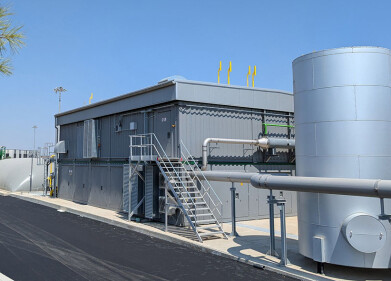Air clean up
Leveraging biotechnology to enhance CO2 capture
Aug 25 2023
Author credit: Stephen B. Harrison, sbh4 consulting
The lessons of nature have served mankind well for decades. The discovery of the antibiotic effects of the bacterium penicillin led to the development of modern antibiotics. Biotechnology is now instrumental in bringing new medicines to market to save lives. Biotechnology can also guide the development of energy efficient means to capture carbon dioxide (CO2).
Many technology providers use amine solvents for CO2 capture. Amines are used by Shell in their CANSOLV and ADIP-ULTRA processes; BASF uses amines for their OASE® blue gas treatment technology; Carbon Clean and Aker Carbon Capture also rely on amine solvents.
However, amines are not the only group of chemicals that can be used for CO2 absorption. Hot potassium carbonate (HPC) is a long-established CO2 capture technology. The HPC process was developed in the 1950s and was modified by two engineers: Benson and Field. It subsequently became known as the Benfield Process. In this form, it is now licensed by Honeywell UOP.
The HPC or Benfield process works in a similar way to many other solvent-based CO2 capture processes. Initially, the flue gas containing CO2 passed into an absorber tower. This is a gas-liquid contacting process where hot potassium carbonate solution absorbs most of the CO2. The CO2-lean flue gas is then emitted to air.
The potassium carbonate loaded with CO2 flows to a second tower where heat is applied to boil the CO2 out of the solution. At the top of this tower, pure CO2 gas is emitted. From the base of this tower CO2-lean potassium carbonate solution is pumped to the top of the first tower to absorb more CO2. This second stage in the process is extremely energy intensive because a large quantity of steam is required to regenerate the potassium carbonate and boil off the CO2.
The UOP Benfield ACT-1 activator can be added to the potassium carbonate solvent to improve the CO2 absorption rate and increase the CO2 loading in the solvent. It can thereby reduce the solvent recirculation rate which results in less energy being required to heat up and regenerate the solvent in the stripping column. ACT-1 is a proprietary organic additive which is incorporated into the potassium bicarbonate at between 1 and 3%.
Biotechnology has also recently been applied to catalyse CO2 absorption in the HPC process through the use of Carbonic Anhydrase (CA). CA is an enzyme which plays an essential role in humans and many animals. Its function in our bodies is to remove CO2, which is a byproduct of respiration.
Respiration is the mechanism by which we, and other animals, convert oxygen that they breathe and food that they eat to energy. It is like an internal combustion reaction, and like combustion it produces CO2. However, the CO2 must be broken down to avoid dramatic pH changes and CA supports that by catalysing the reaction of CO2 with water to form bicarbonate and hydrogen ions: CO2 + H2O → HCO3-+ H+.
A proprietary CA enzyme known as 1T1 is used by CO2 Solutions by Saipem on industrial CO2 capture systems. The molecular structure of the 1T1 enzyme has been engineered to maximise its catalytic efficacy to promote the absorption of CO2 into the potassium carbonate solution and whilst also allowing low-cost manufacture of the enzyme.
Innovation in solvent-based CO2 capture is abundant. Furthermore, many CO2 capture technologies based on adsorption, physisorption, cryogenics and membranes are being developed and piloted. The goal is simple: to reduce the cost of CO2 capture and make the transition to net-zero affordable for all.
Events
May 18 2025 Algiers, Algeria
23rd International Water Management Exhibition
May 20 2025 Prague, Czech Republic
Singapore International Water Week Spotlight 2025
Jun 23 2025 Singapore
Jun 25 2025 Sao Paulo, Brasil
Jul 02 2025 Bangkok, Thailand

















